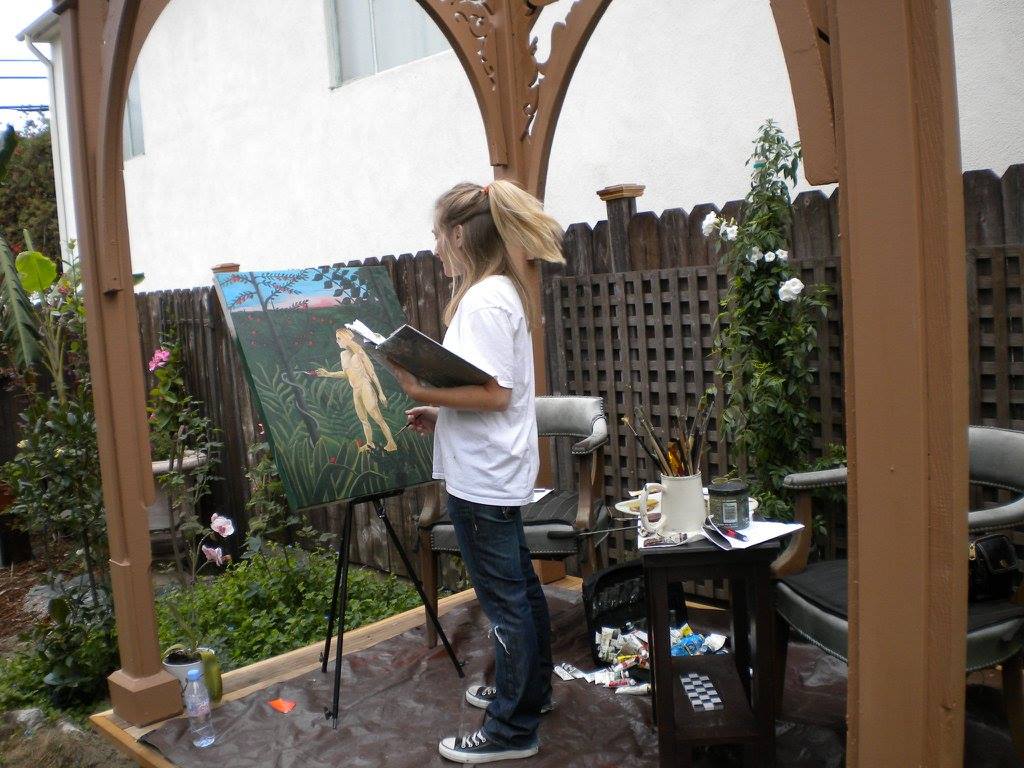I had the opportunity to meet Frank Romero last night at Plaza De La Raza in Los Angeles for his annual Xmas show and bought a print of downtown LA and a small original car and heart painting. One of the paintings I copied of Frank’s was of downtown LA and some of the buildings I have in my copy are in this original print. See my prior post on Frank Romero Copy.
“Frank Romero grew up in the culturally mixed, middle-class Los Angeles community of Boyle Heights and was well into his career by the time he developed a consciousness of being a Latino artist. During the height of the Chicano civil rights movement in the early 1970s, as a member of the Chicano artists’ group “Los Four,” he attained a new, high-profile status in the larger art community. It was not until the mid-1980s, however, that Romero could give visual form to some of the emotionally charged political events he had witnessed. “
“Frank Romero grew up in the Hispanic, Asian, and Jewish communities of East Los Angeles. He began painting when he was five years old and as a teenager attended LA’s Otis Art Institute, one of the best art schools in the nation. Romero did not think of himself as a Chicano until he began to work with three other artists in an informal group known as Los Four. Los Four and other Hispanic artists throughout the West used wall murals, graffiti, and street theater to protest America’s involvement in Vietnam and Southeast Asia. The police response to antiwar demonstrations in Los Angeles was part of a larger pattern of violence against the minority communities that Romero experienced throughout his life. It takes years for the artist to think through and to paint these episodes in the life of his community, because, he says, “That stuff is hard for me to do, it hurts, it’s frightening” (Los Angeles Times, July 28, 2002 [online]). Romero’s brightly colored paintings celebrate the Los Angeles culture of lowriders and “rascuache,” the art of making something beautiful out of the ordinary.”





































